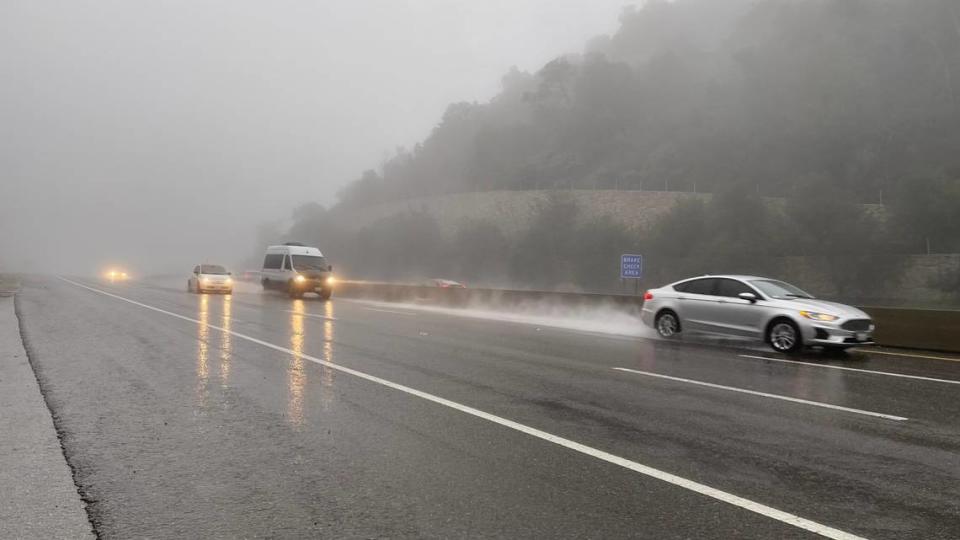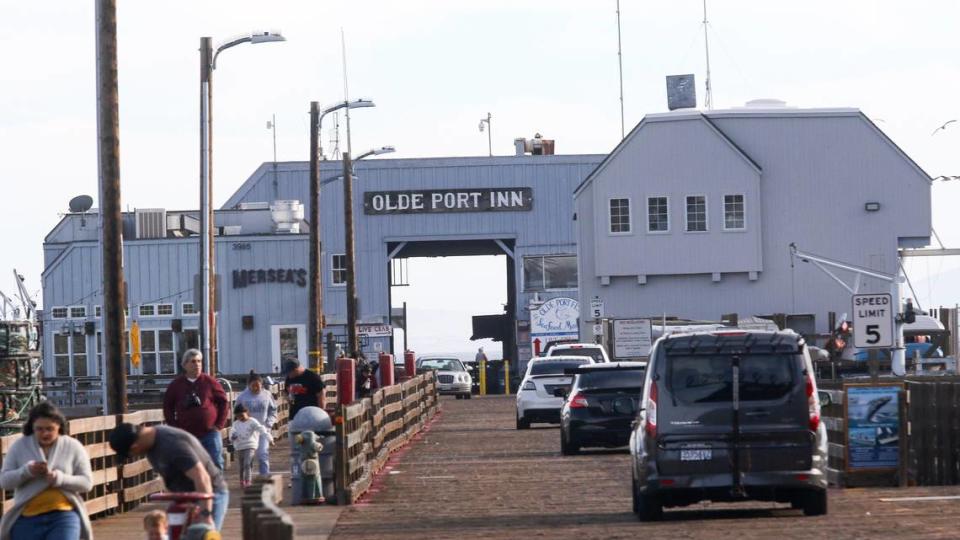New SLO County sales tax could raise $35 million a year. Will it be on the ballot?
A new San Luis Obispo County sales tax could raise $35 million per year for transportation projects ranging from improving the safety of Highway 101 to building bike lanes, supporters say.
The San Luis Obispo Council of Governments is developing a half-cent sales tax to fund transportation projects that could land on the November ballot.
SLOCOG deputy director James Worthley presented the proposed tax and a draft spending plan to the San Luis Obispo County Board of Supervisors on Tuesday, and the supervisors gave feedback on the measure without voting.
Supervisors Dawn Ortiz-Legg and Bruce Gibson said they support the tax.
Ortiz-Legg said the county needs more revenue to fund transportation projects, and this sales tax will help the county apply for more state grant funding.
“It’s one of those things where you put a couple of pennies together and you end up getting something pretty significant,” Ortiz-Legg said.
Supervisor John Peschong, however, did not support the ballot measure because he said sales taxes have more of an impact on lower-income residents.
“Sales taxes are highly regressive,” he said. “They end up taking a bigger chunk of change from people that have smaller sums of money. They don’t support it because of what it will do to their disposable income that they can use to feed their families and pay their rent or pay their mortgage. I mean, we do have a very, very high cost of living in California, and this adds to that.”
Supervisor Debbie Arnold also opposed the tax. She said she would prefer that the board allocate more of its existing revenue to road maintenance and transportation projects and cut spending for other programs, rather than passing a new tax.
“The average taxpayer expects that at least some of their taxes will go to maintaining the infrastructure that we all use,” she said.
Supervisor Jimmy Paulding did not take a position on the sales tax.

Before the sales tax lands on the ballot, it must be approved by a majority of the seven city councils in San Luis Obispo County as well as the SLOCOG Board of Directors and San Luis Obispo County Board of Supervisors.
The Board of Supervisors will have the chance to vote to put the measure on the ballot May 21.
SLOCOG must submit the ballot measure to the county by Aug. 9, 2024, to qualify for the election, according to San Luis Obispo County Clerk-Recorder Elaina Cano.
SLOCOG would pay any costs associated with placing the measure on the ballot.
Two-thirds of SLO County voters must support the tax for it to pass.
SLO County sales tax would fund transportation projects
The ballot measure would impose a 0.5% sales tax.
This means the county would add an extra 15 cents to a $30 pair of shoes and $150 to a $30,000 car, according to SLOCOG’s website promoting the sales tax.
The tax is expected to generate $35 million annually for 20 years — reaching a total of $700 million, according to Worthley.
Potential projects include adding pedestrian enhancements at Dinosaur Caves in Pismo Beach and making safety improvements to Highway 101.
If voters approve the tax, they also automatically approve an investment plan that outlines how the funding is spent for 20 years.
Revenue from a standard sales tax measure goes into a general fund, and the Board of Supervisors or city council decides annually how to use that funding.
Revenue from a transportation sales tax, however, can only be used for transportation projects outlined by the voter-approved investment plan.
According to the draft investment plan, the funding would be split between the North Coast, South County, central SLO County and North County based on population. Within each region, 66% of the funding would be allocated to local projects based on population, while 34% would be distributed to regional projects, Worthley said.
North County would receive a minimum of $246 million, with 34% allocated to regional projects like safety improvements to Highway 46 and Highway 101, according to Worthley. The other 66% would be allocated to local projects, including road repairs to Vineyard Drive in Templeton, he said.
Meanwhile, South County would get about $200 million. Regional projects include expanding the Bob Jones Trail, while local projects include sidewalk and safety improvements in Nipomo.
The sales tax would provide at least $100 million to the North Coast, Worthley said. Those dollars could fund regional projects like public transit for seniors and veterans, along with local projects like road repairs in each community.
Finally, central SLO County is set to get $154 million from the sales tax. Local projects include repairs to Los Osos Valley Road, Broad Street and Tank Farm Road, while regional projects include safety improvements to Highway 101 between the Cuesta Grade and Avila Beach Drive, according to Worthley.
This ballot measure would be similar to Measure J, a failed 2016 initiative that proposed a 0.5% countywide sales tax expected to generate about $180 million for transportation projects, according to the staff report.
In 2016, 66.3% of voters supported the tax — just shy of the 66.7% required to pass the ballot measure.

Tax could help leverage state funding
According to the county’s Long Range Regional Transportation Plan, SLO County needs $5.4 billion to meet its transportation infrastructure goals, but only has $3.1 billion available for such projects.
The sales tax could supplement that $2.3 billion shortfall, Worthley said, partly by strengthening the county’s applications for state grants.
The shortfall is partly caused by a shrinking gas tax, according to Worthley. The increase in electric cars and fuel-efficient vehicles on the road reduces the amount of gas tax collected by the state — a trend that will continue, he said.
According to Worthley, some state grants require applicants to offer up local funding for their proposed projects to win state funding.
The sales tax would create a dedicated funding stream for transportation projects, which can be used to bolster applications for those state grants, Worthley said.
The more local funding a county offers for a project, the more state funding they can get, he said.
The sales tax revenue could be used to leverage almost $1 billion of state grant funding, Worthley said.
In California, 25 other counties also have a local sales tax, designating them as “self-help counties,” according to Worthley.
What’s next?
SLOCOG will continue presenting the potential sales tax to city councils and community service districts across the region this month to get feedback on the measure and the draft investment plant.
On May 1, the SLOCOG Board will vote on whether or not to proceed with the ballot measure. Then, it will approach the city councils for approval.
If it passes at all the necessary levels, the Board of Supervisors will have the chance to vote to put the measure on the ballot on May 21.

 Yahoo Finance
Yahoo Finance 